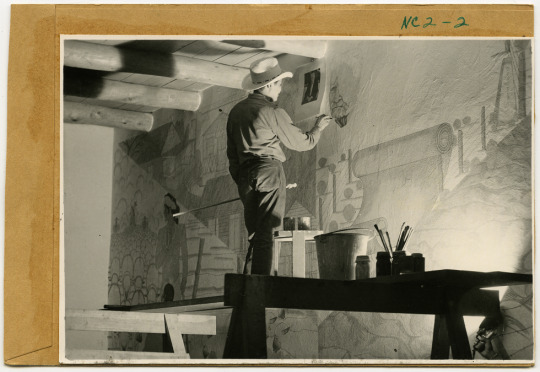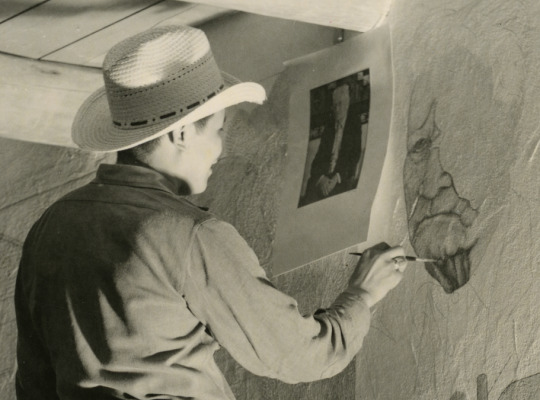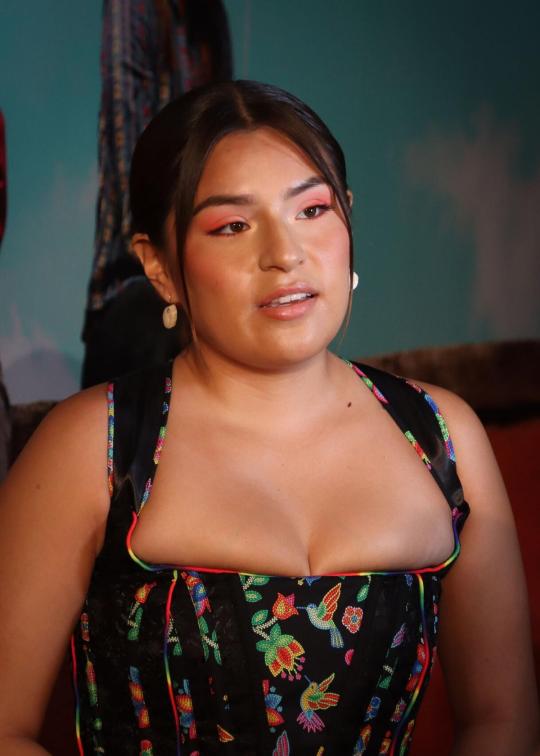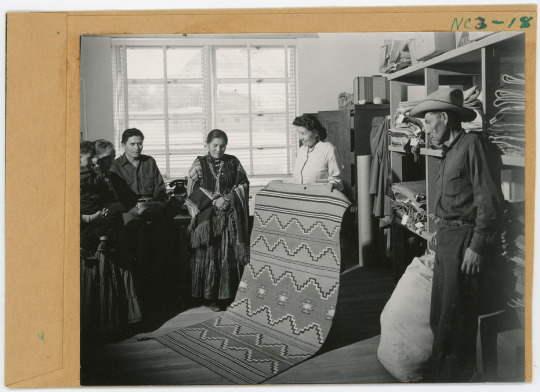#Diné
Text
6K notes
·
View notes
Text
not to add to the oppenheimer discourse but i haven’t seen people talking about this in my part of tumblr (i’m sure people ARE, but i haven’t seen it).
a reminder that uranium mining in navajo nation to build nuclear weapons has caused environmental damage and health hazards that have still not been cleaned up to this day. this started in 1944 and lasted until the 80s. cancer rates DOUBLED in the navajo nation from the 1970s to the 1990s.
there are more than 500 abandoned uranium mines on diné land and the government has not done shit to clean anything up.
and to add insult to injury, the supreme court just ruled that the federal government does not have the obligation to ensure that diné people, which the federal government has plenary power over as a tribal nation in the united states, have running water.
the more you scratch at oppenheimer the worse it gets tbqh
#oppenheimer#oppenheimer discourse#i am not native but i work in tribal law and i work in icwa matters#as well as tribal sovereignty issues and tribal government#navajo nation#indigenous rights#tribal sovereignty#diné
251 notes
·
View notes
Text

‘Diné: Our Survival Is Bound To Theirs’ is a zine curated by zinester and herbalist Kuwa Jasiri, featuring contributions from a range of Native Americans. Buy a copy here.
Featuring stories and resources, its cover is graced by Native American activist and all-round badass Katherine Smith, and the zine itself comes with a small packet of North American wildflower seeds 👊🏽 🌿
#zine#zines#fanzines#fanzine#native american zines#native american fanzines#Diné#Diné zines#Diné fanzines#Navajo#Navajo zines#Navajo fanzines#Katherine Smith#Kuwa Jasiri#wildflowers#Zines about Native Americans#Fanzines about Native Americans
301 notes
·
View notes
Text

Shujayea neighbourhood, for example, an Israeli commander was talking to the media and describing how the area had been cleared – just then an attack happened,” Ashour told Al Jazeera.“In Khan Younis, based on the statements from the Israeli military, nine brigades are deployed in just one governate of the Gaza Strip. These include paratrooper brigades, a special forces brigade, and armoured brigades.
“When you have this number of elite forces in such a small area it tells me the fight has a very long way to go.”
You know who that reminds me of?
Custer.

May the IOF suffer an even bigger loss and be an even bigger joke in our history books 🙏🙏
#palestine#gaza#israel#custer#solidarity#free palestine#from the river to the sea palestine will be free#news#updates#Ojibwe#navajo#diné
51 notes
·
View notes
Text
hey indigenousblr does anyone speak Diné bizaad or have access to someone who does? i've been trying to translate something into the language and only have a few old dictionaries and some websites to parse words together with no idea if its actually correct. would absolutely love any help that could be provided!
54 notes
·
View notes
Photo


Navajo artist Gerald Nailor paints Henry Chee Dodge, chairman of the Navajo Business Council and then the Navajo Tribal Council, into a mural in the Navajo Tribal Council House, on July 22, 1943.
Record Group 75: Records of the Bureau of Indian Affairs
Series: Photographs of Navajo Life in the Southwestern Region of the United States
File Unit: Arts and Crafts
Image description: Gerald Nailor smiles as he stands on scaffolding in front of a large mural. He is painting the face of Henry Chee Dodge, using a photograph tacked on the wall for reference. In the foreground are a bucket, jars, and paintbrushes.
Image description: Zoomed-in portion of the image showing Gerald Nailor from the waist up, and more detail on the face of Henry Chee Dodge.
#archivesgov#July 22#1943#1940s#art#painting#mural#Gerald Nailor#Henry Chee Dodge#Navajo#Diné#Native American history#American Indian history#Indigenous American history
117 notes
·
View notes
Text
Today is Navajo (or, more correctly, Diné) Code Talker Day in the United States, so here's a short piece to mark the occasion.

133 notes
·
View notes
Text
https://www.yesmagazine.org/environment/2022/07/15/navajo-nation-citizen-science-pollution
Methane pollution is poorly tracked, so Diné activists are monitoring it themselves.
—
From behind her FLIR GF320 infrared camera, Kendra Pinto sees plumes of purple smoke otherwise invisible to the naked eye. They’re full of methane and volatile organic compounds, and they’re wafting out of an oil tank in New Mexico’s San Juan Basin.
Pinto, a member of the Diné (Navajo) community and field advocate with environmental group Earthworks, relies on this device in her fight to keep her community’s air clean. She lives in the Eastern Agency of the Navajo Nation, home to booming oil and gas production.
“When I walk outside, I can’t just think about fresh air. I’m thinking about the VOCs. I’m thinking about the methane that I’m breathing in, because I know what’s out there,” Pinto said. “I see it all the time.”
She’s one of countless citizen scientists across the country who are tracking and reporting environmental harms committed by the oil and gas industry to regulators. And here, there are many: The Environmental Defense Fund estimates that each year, New Mexico’s oil and gas companies emit more than 1.1 million metric tons of methane, a greenhouse gas around 86 times more potent in its warming potential than carbon dioxide over a 20-year period. Much of this comes from wasted natural gas—$271 million of it in this state alone, according to the EDF. It leaks out of faulty equipment and is intentionally expelled through the processes of venting and flaring, in which excess, unrefined natural gas is released or burned from oil wells and refineries to eliminate waste or reduce pressure buildups.
This is bad for the planet—high volumes of methane released into the atmosphere accelerate the pace of the climate crisis. It’s also bad for the people who live around it who are exposed to the pollutants that typically come along with methane emissions, like benzene, a carcinogen, and PM2.5 and PM10—particulate matter small enough to get lodged deep in the lungs. Pinto said her neighbors experience disproportionately high rates of headaches, nosebleeds, allergies, and respiratory issues, like sinus and throat discomfort.
“I think the scariest thing about methane is it’s odorless,” Pinto said. “It’s a silent killer. And if my neighbors are breathing it in, that’s worrisome.”
These emissions and the fossil fuel development that causes them have long been “insufficiently regulated,” said Jon Goldstein, senior director of regulatory and legislative affairs at EDF. In 2020, then-president Donald Trump rolled back Obama-era regulations on methane that effectively eliminated the requirement that oil and gas companies monitor and repair methane leaks in their infrastructure.
The Senate voted to reinstate them in April 2021, and last November, the Biden administration announced it would introduce even more comprehensive regulations in an interagency effort to crack down on emissions from the oil and gas sector. As part of the plan, the Environmental Protection Agency proposed its own rules, which include a requirement that states reduce methane emissions from thousands of sources nationwide, and a provision that encourages the use of new technology designed to find major leaks. A final methane rule is expected to be implemented later this year.
The Navajo Nation, too, is taking things into its own hands: The Navajo Nation Environmental Protection Agency is currently considering adopting a permitting program to regulate methane from oil and gas development on its land.
Here, methane emissions from oil and gas companies are 65% higher than the national average, seeping out of pipelines, oil rigs, and the like. The San Juan Basin, some 150 miles northwest of Santa Fe, has received a failing grade from the American Lung Association for ozone pollution, or smog, the result of the combination between VOCs and radiation from sunlight.
Exposure to ozone has been tied to degraded respiratory health and asthma attacks, and it’s typically seen in cities, Goldstein said.
“The San Juan Basin isn’t home to large cities,” he said. In San Juan County, ozone is the result of the widespread build-out of oil and gas wells; approximately half of the county’s 50,000 residents who identify as Indigenous live within half a mile of those wells, according to EDF.
Catching emissions at the source will be crucial to changing this legacy. And where regulators can’t (or won’t) step in, residents like Pinto are. The federal government is now relying upon community monitoring, or work that citizens do to contribute to public understanding of the scope of air pollution near fossil fuel sites, a development that Eric Kills A Hundred, tribal energy program manager at EDF, believes will be “huge.”
The EPA’s methane proposal includes a plan to implement a program to “empower the public to detect and report large emission events for appropriate follow-up by owners and operators,” according to an agency news release.
During the comment period for the EPA’s proposed community monitoring program, members of the petroleum industry questioned whether the agency has the authority to establish it at all, primarily objecting to the idea that air quality monitoring be conducted by entities other than agencies and producers themselves, E&E News reported in May.
But Pinto said groups like Earthworks have a track record of doing this work long before federal regulators began tapping them for their data collection.
“Documenting these types of emissions is important because no one else is really doing it,” she said. “Even the agencies that are regulating this type of thing. Because we’re in a rural area, what can they actually capture when they come out here? Are they going to more than 100 sites?”
Kills A Hundred said these efforts are not only about what the Navajo Nation can contribute to government data on methane pollution, they’re also about empowering the community to play a role in stopping it.
“Having been the stewards of the land for so long,” he said, “it’s just so important for these communities to be active and raise their voice.”
#indigenous#native american#climate crisis#methane#fossil fuels#greenhouse gas emissions#navajo#dine#diné#navajo nation#epa#environmental action#pollution#science
641 notes
·
View notes
Text

#myart#chenoa#native culture#native american#navajo#dine#diné#dance#native american dance#digital art#my art
75 notes
·
View notes
Text

Blue Corn Woman by Amber McCrary, a Diné poet and zinester.
#Native American Heritage Month#IT BEGINS!#I met her and she’s a delight#poetry#indigenous#indigenous poetry#indigenous art#native american#native art#feminist#sapphic#wlw#ndn#ndn tag#first nations#diné#feminist poetry#feminism
291 notes
·
View notes
Text

Horse Notations
Raven Chacon (Diné)
12 notes
·
View notes
Text




Paulina Alexis wearing dresses by Michelle Luna of Bitterwater for Redhouse
1. At the premiere for season 2 of Reservation Dogs
2. At SCAD TVFest 2023
#paulina alexis#red carpet#fashion#celebrity fashion#celebrity style#bitterwater for redhouse#michelle luna#indigenous designer#diné#navajo#native american#indigenous women#surface pattern#pattern#surface pattern design#pattern design#textiles#textile design#print#printed textiles#2023#reservation dogs#scad tvfest#ribbon skirt#corset dress
136 notes
·
View notes
Text
Having a moment where I realize the depth of why our colonizers keep us so poor and incapable.
Someone said they hoped Vine Deloria lived long to see the USA run from Vietnam and it hit me.
You wouldn't be able to take me away from live coverage if Vietnamese fighters, Diné warriors, Anishinaabe warriors, and Palestinian resistance were on the ground the together against the IOF.
IMAGINE???

#fantasizing about the end of capiatlism and settler colonialism again#😌😍😍😍#creator please provide nothing but solidarity and aid to realize this#indigenous#native#solidarity#Ojibwe#Diné#Navajo#Anishinaabe#Vietnam#Vietnamese#Palestine#indigenous solidarity
52 notes
·
View notes
Text
I really hope that they make a Ken 10 show. Like a.) let's explore the lives of Native Americans, especially the complexity of those with mixed heritage! The social justice context of the show was definitely missing in Omniverse. And b.) Ben was a kid when I was a kid...like 20 years ago... It's time to pass the mantle onto the next generation.
#ben 10#ben tennyson#kenny tennyson#ken 10#indigenous lives matter#bring social justice back to the show#navajo#diné
8 notes
·
View notes
Text

The Navajo Arts and Crafts Guild buying rugs in Window Rock, Arizona, on March 27, 1943.
John and Agnez Anderson selling; Marie Martin buying.
Record Group 75: Records of the Bureau of Indian Affairs
Series: Photographs of Navajo Life in the Southwestern Region of the United States
File Unit: Arts and Crafts
Image description: Six people in a room with large shelves along one side. One woman is holding one end of an unfurled woven rug, which has straight horizontal stripes and stepped diagonal stripes in several different colors (well, different shades of gray in this black and white photo). A man in a cowboy hat stands to the side near the shelves, which hold folded rugs. Three adults stand on the other side of the room, looking at the rug; one woman is holding a small child.
#archivesgov#March 27#1943#1940s#Native American history#American Indian history#Indigenous American history#Navajo#Diné#art#craft#rug#weaving
94 notes
·
View notes